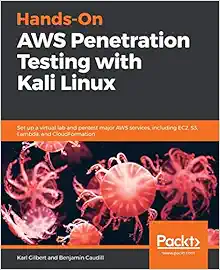The article “How cyber security professionals are leveraging AWS tools” from Computer Weekly provides an in-depth look at how organizations utilize Amazon Web Services (AWS) to enhance their cybersecurity posture. Here is a rephrased summary of the key points and tools discussed, followed by my feedback.
1. Centralized Cloud Visibility and Operations
AWS offers cybersecurity professionals a unified view of their cloud environments, facilitating smoother operations. Tools like AWS CloudTrail and AWS Config enable teams to manage access, detect anomalies, and ensure real-time policy compliance. Integration with platforms such as Recorded Future further enhances risk orchestration capabilities.
2. Foundational Tools for Multi-Cloud Environments
In multi- or hybrid-cloud setups, AWS CloudTrail and AWS GuardDuty serve as foundational tools. They provide comprehensive insights into cloud activities, aiding in the identification and resolution of issues affecting corporate systems.
3. Scalability for Threat Analysis
AWS’s scalability is invaluable for threat analysis. It allows for the efficient processing of large volumes of threat data and supports the deployment of isolated research environments, maintaining the integrity of research infrastructures.
4. Comprehensive Security Toolset
Organizations like Graylog utilize a suite of AWS tools—including GuardDuty, Security Hub, Config, CloudTrail, Web Application Firewall (WAF), Inspector, and Identity and Access Management (IAM)—to secure customer instances. These tools are instrumental in anomaly detection, compliance, and risk management.
5. AI and Machine Learning Integration
AWS’s integration of artificial intelligence (AI) and machine learning (ML) enhances threat detection capabilities. These technologies power background threat tracking and provide automated alerts for security issues, data leaks, and suspicious activities, enabling proactive responses to potential crises.
6. Interoperability and Scalable Security Architecture
The interoperability of AWS tools like GuardDuty, Config, and IAM Access Analyzer allows for the creation of a scalable and cohesive security architecture. This integration is crucial for real-time monitoring, security posture management, and prevention of privilege sprawl.
7. Enhanced Threat Intelligence
AWS’s advanced threat intelligence capabilities, supported by AI-driven tools, enable the detection of sophisticated cyber threats. The platform’s ability to process vast amounts of data aids in identifying and responding to emerging threats effectively.
8. Support for Compliance and Risk Management
AWS tools assist organizations in meeting compliance requirements and managing risks. By providing detailed logs and monitoring capabilities, these tools support adherence to regulatory standards and internal security policies.
Feedback
The article effectively highlights the multifaceted ways in which AWS tools bolster cybersecurity efforts. The integration of AI and ML, coupled with a comprehensive suite of security tools, positions AWS as a robust platform for managing modern cyber threats. However, organizations must remain vigilant and ensure they are leveraging these tools to their full potential, continuously updating their strategies to adapt to the evolving threat landscape.
For further details, access the article here

Securing the AWS Cloud: A Guide for Learning to Secure AWS Infrastructure (Tech Today)
RSA 2025 spotlighted 10 innovative cybersecurity tools
Fast-track your ISO 27001 certification with ITG all-inclusive ISO 27001:2022 toolkit!
20 Best Linux Admin Tools In 2024
33 open-source cybersecurity solutions you didn’t know you needed
Tracecat: Open-source SOAR
InfoSec services | InfoSec books | Follow our blog | DISC llc is listed on The vCISO Directory | ISO 27k Chat bot | Comprehensive vCISO Services | ISMS Services | Security Risk Assessment Services





















